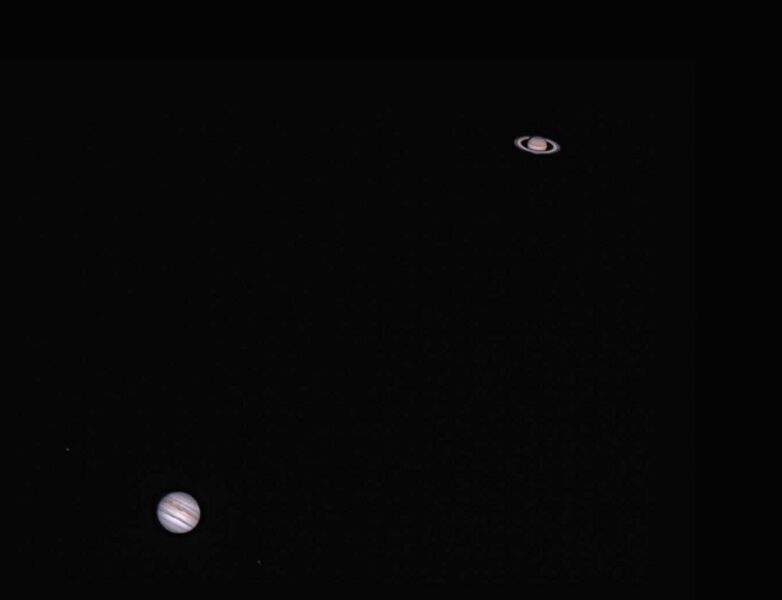When the world’s got you down, look up and tune into orbital time.

Tom Polakis
Just as the hellacious year of 2020, so full of loss, conflict, cynicism, and pain, was drawing to a close, we Earthlings were treated to a rare and stunning celestial arrangement as the two bright gas giants Jupiter and Saturn pulled to within a fingernail’s width of each other on the night of the winter solstice.
For those of us attuned to the heavens, such a sight is not only a delight in and of itself, but it can pull us out of our quotidian reality. We enter into sky time, recalling other spectacles, other times and places when the stars aligned for us. We remember our favorite eclipses, rare meteor showers, auroral light shows, the few really good comets that have offered themselves to our close inspection, and those bright planetary congregations we’ve witnessed during our few orbits.
My own wedding came (not by coincidence) on a summer solstice coinciding with a choice conjunction of the crescent moon with two bright planets. For me, every planetary conjunction now has a little of that night in it. Each watcher has their own associations, and these peak sky happenings stitch our life’s journeys together at a scale beyond the day-to-day.
These memorable sightings also bind us to human lives before and after our own. My grandmother, who is no longer with us, was not impressed with the apparition of Halley’s Comet in 1986. To explain why, she drew me a picture from memory of the truly magnificent appearance in 1910, when she was only 10 years old.
The previous close meeting between Saturn and Jupiter came in 1226 (not counting their discrete 1623 rendezvous, when few likely saw them consorting so near to the Sun). Seen only with naked eyes, that was the last pre-telescopic, pre-Copernican superconjunction. Not too long after that, we learned what the planets really are and, concurrently, that our own world is also a planet that could be seen wandering through the skies of others. With that knowledge, we’ll never see a conjunction the same way again.
This orbital dance also connects us to geologic and cosmologic time. It has been proceeding since long before there were humans, or hominids, or mammals, or any creatures with eyes who might have noticed.
Beyond the simple aesthetic enjoyment, why are these cosmic configurations so compelling?
Conjunctions, along with eclipses and cometary apparitions, have long been seen as omens. It’s not hard to imagine why. The wandering planets, by nature of their capricious movements, can appear to possess agency and awareness. When they cross paths, it highlights their apparent personalities, almost as if they were greeting one another, or perhaps conspiring. In truth, the awareness exists only down here in the eyes of the beholders.
We don’t need to think of such alignments as portents to appreciate the wisdom in the perspective they bring, to delight in the reminder of the rhythmic and harmonious cosmos we occupy, and to feel enmeshed in their movements. After all, it is the shifting parallax of our view from Earth’s orbit, the fact that we observe from a moving platform, that makes Saturn and Jupiter seem to rush together and then part so rapidly. This is a dance we participate in.
When the world feels momentarily dark, celestial spectacles can connect us to places and times that transcend our immediate worries and remind us of the wider landscapes we inhabit. Jupiter and Saturn will pass each other this close again on March 15, 2080. I won’t get to see that one, but I’m glad some of you will.
This article originally appeared in print in the May 2021 issue of Sky & Telescope. Subscribe to Sky & Telescope.
 0
0
Comments
You must be logged in to post a comment.